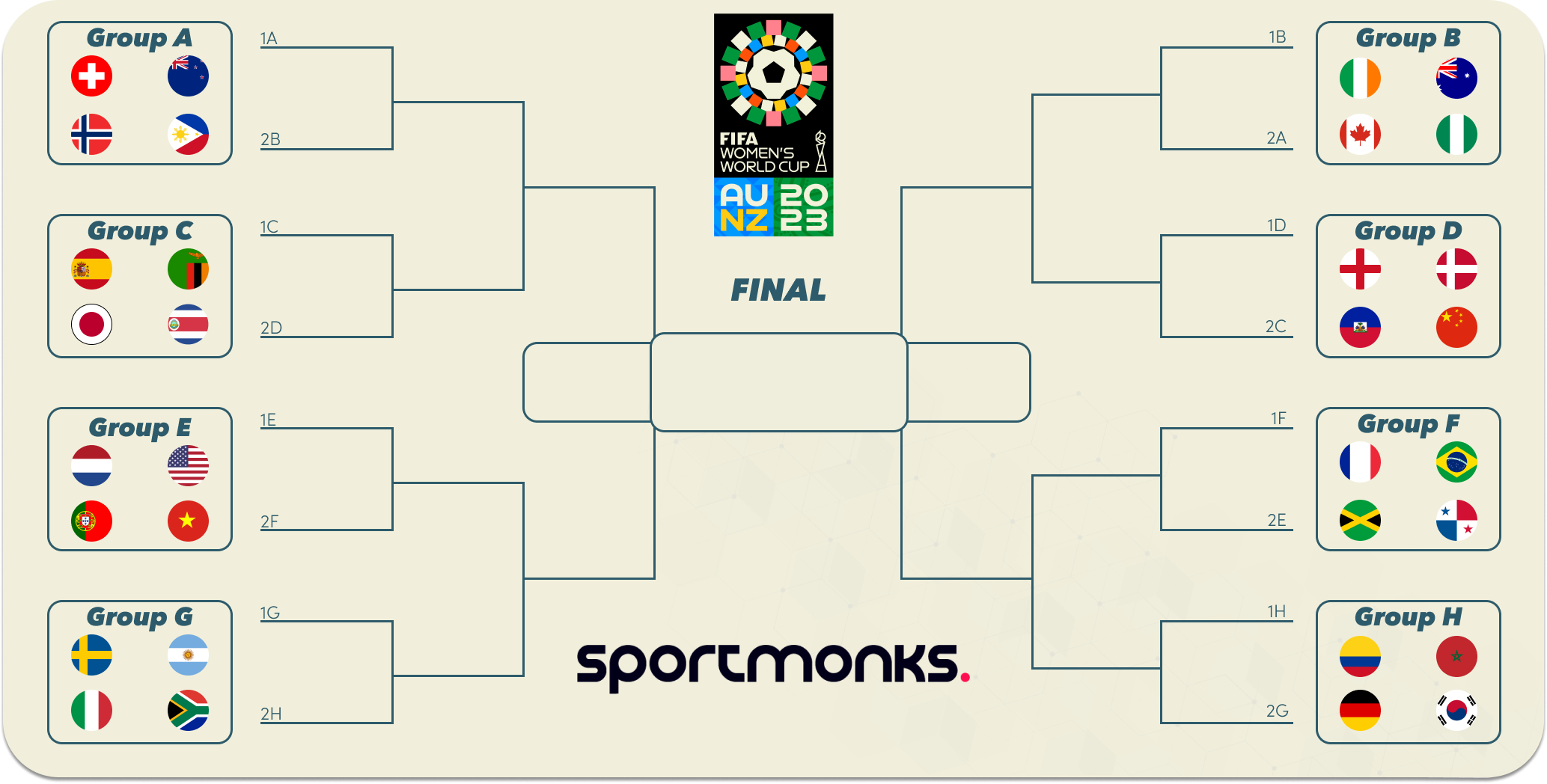Women’s World Cup 2023 – Guide
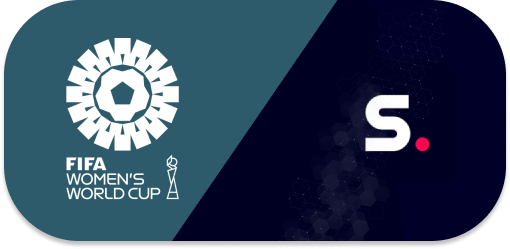

The Women’s World Cup 2023 will consist of 64 matches played in 9 host cities across Australia and New Zealand. The 32 teams will be divided into eight groups of four each, with the top two teams from each group advancing to the tournament’s knockout stage. The knockout stage will consist of a round of 16, quarter-finals, semi-finals, and the final.
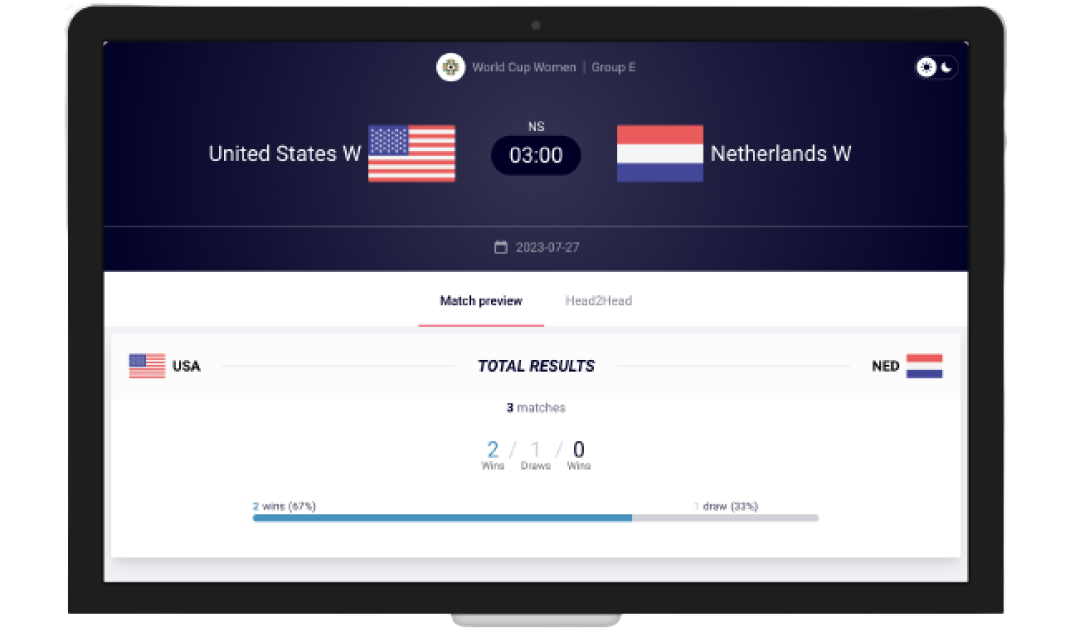
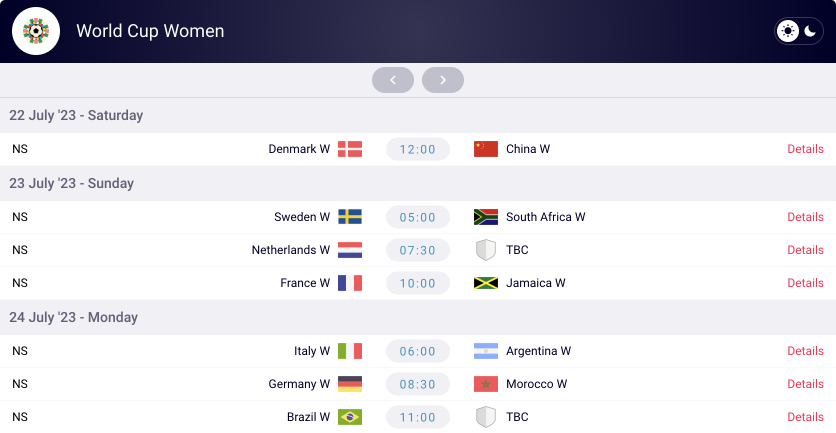
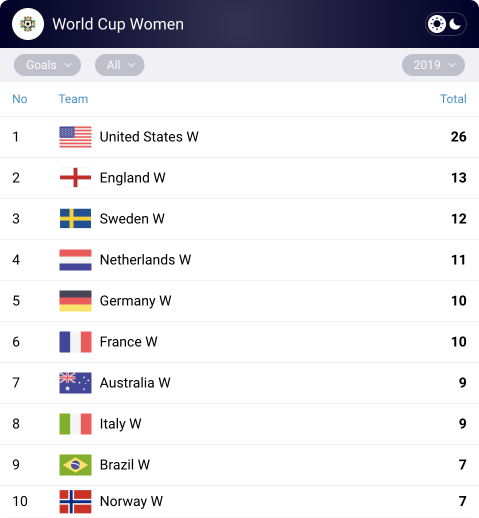
Get the most out of the FIFA Women’s World Cup 2023 with Sportmonks’ API. Our easy-to-use platform lets you access all the critical football data you need to keep your customers up-to-date on the tournament. With Sportmonks’ Women’s World Cup 2023 API, there’s something for everyone. Whether you’re a sportsbook, media outlet, or football enthusiast, our data will help keep your users engaged and informed throughout the tournament.
It’s great news for New Zealand that they have been drawn into a relatively favourable group for the 2023 Women’s World Cup. Norway and Switzerland are their main competitors to progress to the knockout rounds. However, they must recognise debutants in the Philippines who will be eager to make an impression on the world stage. The Black Ferns hope to build on their recent successes, having won the OFC Women’s Nations Cup in 2018 and qualifying for the 2019 Women’s World Cup.
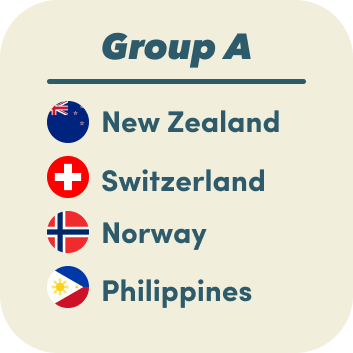

New Zealand
New Zealand won the OFC Women’s Nations Cup in 2018 and is one of the hosts of the Women’s World Cup 2023.
FIFA Rank: 25
FIFA Code: NZL
Nickname: The Football Ferns

Norway
Norway has a rich history in women’s football, winning the World Cup in 1995 and the Euros in 1987, 1993 and 2013. They have also finished as runners-up in the Olympics twice. Currently ranked 13th globally, Norway will be looking to make a deep run in the 2023 World Cup.
FIFA Rank: 12
FIFA Code: NOR
Nickname: Grasshoppers

Switzerland
Switzerland reached the round of 16 at the 2019 Women’s World Cup, their second consecutive appearance in the tournament.
FIFA Rank: 10
FIFA Code: SUI
Nickname: Schweizerinnen

Philippines
The women’s football team of the Philippines, also known as the Malditas, are hoping to make a splash in their first appearance in the Women’s World Cup. They qualified as the runners-up of the 2018 AFC Women’s Asian Cup, their best-ever finish in the tournament.
FIFA Rank: 49
FIFA Code: PHI
Nickname: Malditas
Canada and the Republic of Ireland have a challenging schedule with the long journey to and from Perth. On the other hand, Australia, as co-hosts, has a lot of pressure on their shoulders, especially with the possibility of facing strong teams like Canada and England in the knockout stages. It will be interesting to see how the Matildas cope with the expectations and the tough competition. As for Nigeria and Ireland, they will undoubtedly look to cause some upsets and prove their worth on the international stage.
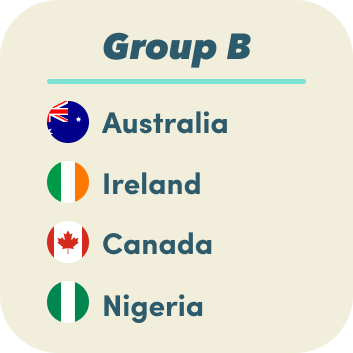

Australia
Australia’s Matildas have been a force in women’s football recently, regularly competing in major tournaments and boasting several star players.
Rank: 10
FIFA Code: AUS
Nickname: Matildas

Ireland
Ireland’s women’s football team is looking to cause an upset in a complex group.
FIFA Rank: 22
FIFA Code: IRL
Nickname: The Girls in Green

Canada
Canada’s women’s football team is a force to be reckoned with, having won two Olympic bronze medals and reached the World Cup quarter-finals in 2015 and 2019.
FIFA Rank: 6
FIFA Code: CAN
Nickname: The Canucks

Nigeria
Nigeria’s Super Falcons are the most successful African team in Women’s World Cup history, reaching the quarter-finals in 1999 and 2011.
FIFA Rank: 42
FIFA Code: NGA
Nickname: Super Falcons
It is true that Spain and Japan have been placed in a relatively easy group and should have a smooth run to the quarter-finals. While Spain’s pre-World Cup situation is complicated due to disputes with the federation and coach, their understudies have shown they can still compete at the highest level. Costa Rica and Zambia, the two other teams in their group, are unlikely to pose a significant threat to Spain or Japan.
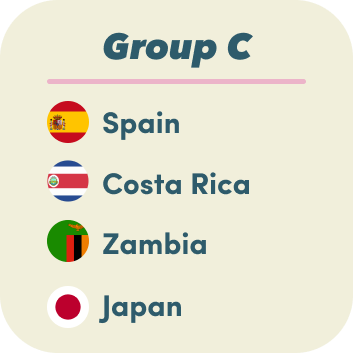

Spain
Spain has never won a major international tournament, but it has been a force in Europe, finishing runners-up at the 2019 World Cup and the 2021 European Championship.
FIFA Rank: 7
FIFA Code: ESP
Nickname: La Roja

Costa Rica
Costa Rica will be looking to improve on their group-stage exit in 2019. They have reached the knockout stages once before, in 2015, where they were beaten by eventual winners USA in the quarter-finals.
FIFA Rank: 36
FIFA Code: CRC
Nickname: Las Ticas

Zambia
Zambia will be making their World Cup debut in 2023. They qualified for the tournament by finishing third in the 2021 Africa Women’s Cup of Nations.
FIFA Rank: 77
FIFA Code: ZAM
Nickname: The Shepolopolo

Japan
Japan won the Women’s World Cup in 2011 and finished runners-up in 2015. They have also won four AFC Women’s Asian Cups, most recently in 2018, and are ranked 11th globally.
FIFA Rank: 11
FIFA Code: JPN
Nickname: Nadeshiko
The draw has been kind to England, with Denmark, China, and Haiti in their group. They are expected to advance to the knockout rounds easily. However, it will get more challenging in the last 16, where they could face Australia or Canada. The battle for second place in their group is also expected to be competitive, with China and Denmark both capable of securing the spot.
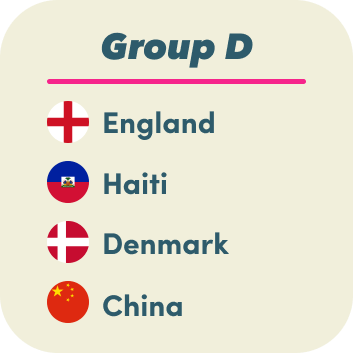

England
England, winners of the World Cup in 1966, will be hoping to lift the trophy again. They reached the semi-finals in 2019 but will need to improve their performances to go all the way.
FIFA Rank: 4
FIFA Code: ENG
Nickname: The Lionesses

Denmark
Denmark will be eager to make amends after failing to qualify for the 2019 World Cup. They have a strong squad but are faced with a tough group and will be hoping to make it out of the group stage.
FIFA Rank: 15
FIFA Code: DEN
Nickname: Kvindelandsholdet

China
China has a strong tradition in women’s football and has twice finished as runners-up at the World Cup. They have also won four AFC Women’s Asian Cups and have been runners-up three times.
FIFA Rank: 13
FIFA Code: CHN
Nickname: Steel Roses

Haiti
Haiti will debut at the Women’s World Cup after qualifying for the first time.
FIFA Rank: 53
FIFA Code: HAI
Nickname: Les Grenadières
The USA and the Netherlands could face each other again in the 2023 World Cup, which would be exciting. Both teams will want to win their group to avoid facing Sweden, the probable winners of Group E, in the knockout stage. The Netherlands will be particularly keen to beat the USA on a big stage. Portugal and Vietnam are also in the group, but they are not expected to cause any upsets.
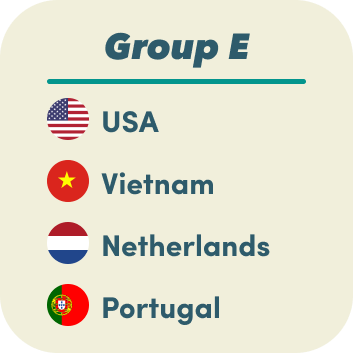

USA
The United States women’s national soccer team is one of the most successful teams in women’s soccer, having won four FIFA Women’s World Cup titles and four Olympic gold medals.
FIFA Rank: 1
FIFA Code: USA
Nickname: The Stars and Stripes

Vietnam
Vietnam is set to make their second World Cup appearance in 2023, having previously qualified for the 2015 tournament, where they were eliminated in the group stage.
FIFA Rank: 33
FIFA Code: VIE
Nickname: Golden Girls

Netherlands
The Netherlands finished runners-up in the 2019 World Cup, losing to the USA in the final. And they want to make amends in this group by finally beating the USA on the big stage.
FIFA Rank: 8
FIFA Code: NED
Nickname: Oranje Leeuwinnen

Portugal
Portugal will make their first-ever appearance at the Women’s World Cup in 2023. Despite being newcomers to the tournament, the Portuguese have steadily improved in recent years and currently sit at their highest-ever FIFA ranking.
FIFA Rank: 21
FIFA Code: POR
Nickname: A Seleção
If France can recover from their setback, they have the potential to perform well in 2023. A knee injury to Marie-Antoinette Katoto disrupted their plans, but there is hope that she may recover in time for the tournament. Brazil will miss their influential midfielder Formiga for only the second time in the competition’s history. They have had mixed results against European opponents this year, with three losses, three draws, and two wins, including a 2-1 defeat to France. Jamaica will participate in their second tournament, and Panama will complete the group, but neither is expected to cause any major upsets.
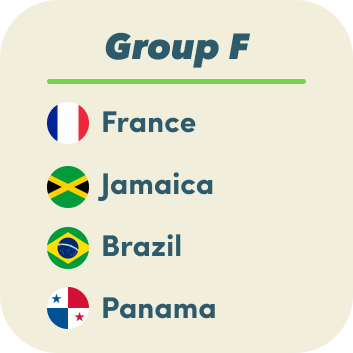

France
Les Bleues are one of the strongest teams in the world and will be expected to finish at the top of their group. They have an impressive record in major tournaments, having finished fourth or better in the last three World Cups.
FIFA Rank: 5
FIFA Code: FRA
Nickname: Les Bleues

Jamaica
The Reggae Girlz will be looking to improve on their performance in their first-ever World Cup in 2019, where they failed to advance past the group stage.
FIFA Rank: 43
FIFA Code: JAM
Nickname: Reggae Girlz

Brazil
Brazil has a proud history in women’s soccer, winning multiple Copa America Femenina titles and finishing as runners-up at the 2007 World Cup. They will be looking to bounce back from a disappointing showing in 2019, where they were knocked out in the round of 16.
FIFA Rank: 9
FIFA Code: BRA
Nickname: Seleção Feminina

Panama
Panama is making their World Cup debut in 2023, having qualified as one of the top teams from the CONCACAF Women’s Championship. They will be looking to impact and surprise some of the more established teams.
FIFA Rank: 52
FIFA Code: PAN
Nickname: Las Canaleras
With their history of success, Sweden is likely to be the team favoured to top the group. Italy had a tough time in the Euros this summer, finishing at the bottom of Group D with only one point and two goals scored. If Italy manages to clinch second place, they will face a challenging match against the likely winner of Group E, the Netherlands or the USA. Both South Africa and Argentina struggled in the 2019 edition and will aim for an improved performance.
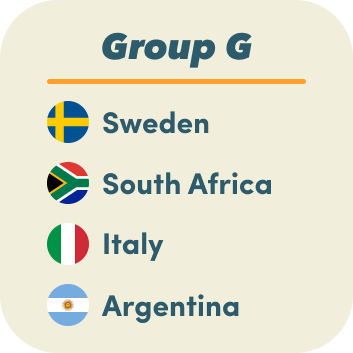

Sweden
Sweden is a top-ranked team in women’s football, with three Olympic silver medals and one World Cup silver medal. They finished third in the 2019 World Cup and are currently ranked fifth globally.
FIFA Rank: 3
FIFA Code: SWE
Nickname: Blågult

South Africa
South Africa is a relatively new team in women’s football, having played their first match in 1993. They qualified for the World Cup for the first time in 2019 but failed to reach the knockout stage.
FIFA Rank: 54
FIFA Code: RSA
Nickname: Banyana Banyana

Italy
Italy is a strong team in women’s football, having qualified for the World Cup four times and reaching the quarter-finals twice. They are currently ranked 10th in the world.
FIFA Rank: 16
FIFA Code: ITA
Nickname: Azzurre

Argentina
Argentina is a developing team in women’s football, having only qualified for the World Cup once in 2019.
FIFA Rank: 28
FIFA Code: ARG
Nickname: La Albiceleste
Group H is expected to be dominated by Germany, who impressed in the Euros and are ranked third in the world. They are likely to face the runner-up of Group F, which could be France or Brazil if they secure a win. A possible rematch of the Euros final with England is also possible. While Morocco is making their World Cup debut, Colombia still needs to qualify in 2019 despite reaching the last 16 in 2015. South Korea, on the other hand, may pose the biggest challenge to Germany, having qualified for the World Cup four times and making it out of the group stage once in 2015.
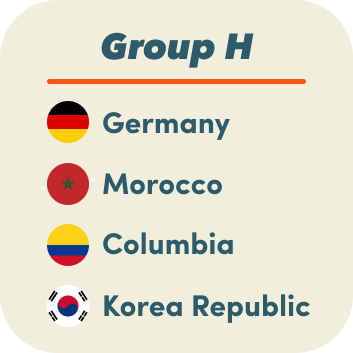

Germany
Germany is a dominant force in women’s soccer, winning two World Cups and eight UEFA Women’s Championships. They are ranked second in the world by FIFA and will be a strong contender to win the 2023 Women’s World Cup.
FIFA Rank: 2
FIFA Code: GER
Nickname: Die Nationalelf

Colombia
Colombia’s women’s team has had some success in recent years, including reaching the round of 16 in the 2015 Women’s World Cup. However, they failed to qualify for the 2019 tournament and expect to bounce back in 2023.
FIFA Rank: 26
FIFA Code: COL
Nickname: Las Cafeteras

Morocco
Morocco are making their Women’s World Cup debut in 2023. They are ranked 90th in the world by FIFA and hope to make a good impression on the global stage.
FIFA Rank: 73
FIFA Code: MAR
Nickname: Atlas Lionesses

Korea Republic
Korea Republic will be appearing in their fourth Women’s World Cup in 2023, having qualified for the tournament once before (in 2015). They are ranked 20th in the world by FIFA and will aim to make it out of the group stage this time.
FIFA Rank: 17
FIFA Code: KOR
Nickname: Taeguk Ladies
As co-hosts Australia and New Zealand get ready to welcome 32 teams—the largest field in the tournament’s history and the first Women’s World Cup to be staged in two nations—it will be an occasion unlike any other.
The action begins on July 20 in Auckland, New Zealand, and ends on August 20 in Sydney, Australia. The competition will take place in a total of 10 stadiums across nine cities in the two countries:
Stadium Australia
Capacity: 83,500
When did it open: 1999
World Cup fixtures: Group stage, round of 16, quarter-final, semi-final, final
Stadium Australia has a rich history of hosting significant events and moments in Australian football. Located in Sydney Olympic Park, it has previously been the venue for various international sporting competitions. In November 2021, the stadium set a new record for the largest attendance at a women’s football match in Australia when the Matildas played against the United States. However, this record is expected to be surpassed by either the opening match of the Women’s World Cup (featuring Australia vs Republic of Ireland) or the tournament’s final.
Sydney Football Stadium
Capacity: 42,512
When did it open: 2022
World Cup fixtures: Group stage, round of 16
The first Sydney Football Stadium was opened in 1988, and the new stadium was constructed on the same site, opening in August 2022. As one of the largest rectangular venues in Australia, it is a popular location for various domestic sports, including football, rugby league, and rugby union. Additionally, the stadium has hosted several international sports events. The stadium is adjacent to the renowned Sydney Cricket Ground and serves as the headquarters for both Rugby Australia and the National Rugby League.
Melbourne Rectangular Stadium
Capacity: 30,052
When did it open: 2010
World Cup fixtures: Group stage, round of 16
AAMI Park was constructed adjacent to Melbourne’s historic Olympic Park Stadium to provide a purpose-built rectangular stadium that could serve as a suitable home for teams that didn’t play on the large ovals used in Australian Rules football, which is the dominant code in Melbourne. Originally designed to accommodate 20,000 spectators, an additional 10,000 seats were added due to the large crowds drawn by the Melbourne Victory in their early years. Since then, the stadium has become widely regarded as one of the country’s best venues to watch football.
Brisbane Stadium
Capacity: 52,263
When did it open: 1914
World Cup fixtures: Group stage, round of 16, quarter-final, third-place final.
Brisbane Stadium, also known informally as Lang Park, is situated in Brisbane’s original cemetery. With more than a century of history, the stadium has hosted numerous remarkable sporting and musical events and underwent renovation in 2003. The venue is adorned with six bronze statues placed around the stadium in honour of the rugby league and rugby union icons who have established themselves there.
Perth Rectangular Stadium
Capacity: 22,225
When did it open: 1920
World Cup fixtures: Group stage
Perth Rectangular Stadium, initially known as Perth Oval, was constructed on a field reclaimed from Stone’s Lake. For more than a century, the venue has been the site of numerous sporting events in Perth. The entrance gates, built in the 1930s, have been designated heritage sites. As the only professional rectangular stadium in the city, Perth Rectangular Stadium has undergone extensive renovations in preparation for the FIFA Women’s World Cup. These upgrades include improved lighting, new dressing rooms, an updated playing surface, and temporary facilities installed for the duration of the Women’s World Cup.
Hindmarsh Stadium
Capacity: 18,435
When did it open: 1960
World Cup fixtures: Group stage, round of 16
Hindmarsh Stadium is widely recognized as one of the finest places in Australia to view football games, and its cosy environment implies that it doesn’t require a large crowd to create a boisterous atmosphere. The site of an oval that was home to the Australian Rules football team West Torrens Football Club, the venue was transformed into its present rectangular shape during the 1960s. For the FIFA Women’s World Cup, the stadium underwent significant upgrades, including improved disability access, a new roof on the eastern stand, and improved corporate facilities.
Eden Park
Capacity: 48,276
When did it open: 1900
World Cup fixtures: Group stage, round of 16, quarter-final, semi-final.
Eden Park is the primary stadium of New Zealand that can accommodate various sports, such as rugby union, cricket, rugby league, and football. Constructed on swampy terrain, the venue has been hosting sporting events since 1900. Initially, it was built as a cricket ground, but it has also accommodated national and local sports over the years. The stadium underwent redevelopment for the 2011 Rugby World Cup and now features world-class, comprehensive facilities. Earlier this year, the Football Ferns hosted the United States in a friendly match at Eden Park, attracting a record crowd of 12,721, the largest ever recorded for women’s football in New Zealand.
Dunedin Stadium
Capacity: 28,744
When did it open: 2011
World Cup fixtures: Group stage
Initially criticized for its expected cost compared to its limited potential use, Dunedin Stadium has now been used twice as a World Cup venue, hosting games during both the 2011 Rugby World Cup and the 2015 FIFA U20 World Cup. The stadium is the only fully-covered venue in New Zealand, which is essential given the harsh weather conditions that can affect the country’s southern regions. The roof has given it a distinctive look, and it is now known as “The Glasshouse,” resembling a greenhouse due to its covering.
Wellington Regional Stadium
Capacity: 39,000
When did it open: 2000
World Cup fixtures: Group stage, round of 16, quarter-final.
New Zealand’s national football team, the All Whites, secured a historic qualification to the FIFA World Cup by drawing with Bahrain at Wellington Regional Stadium, also known as “The Cake Tin” due to its unique bowl shape. The stadium serves as the home of football in New Zealand and can host cricket games during the summer months.
FMG Stadium Waikato
Capacity: 25,111
When did it open: 2002
World Cup fixtures: Group stage
Waikato Stadium played a crucial role in the lead-up to the FIFA Women’s World Cup, hosting two preliminary qualifiers before being the site of Portugal’s historic win over Cameroon that secured their first-ever spot in the tournament. Unlike other New Zealand venues designed as ovals to accommodate cricket, Waikato Stadium is solely built as a rectangular stadium with stands that provide an intimate viewing experience, making it a highly regarded venue to watch football.
Imagine you want to display a cool visual of the entire Women’s World Cup schedule. You’ll need the complete schedule, including knockout games. Our World Cup API has got you covered. You’ll get a fantastic bang for your buck with the top-notch Women’s World Cup Football Data you and your clients need. We’ve got the freshest and most reliable data in our industry.
